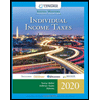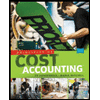
Economic Trade-off of Graduate School. Jessica Sotomajor, of Bangor, Maine, works for a military contractor and hopes to earn an extra $1,000,000 over her remaining 30-year working career by going back to school to obtain a doctor’s degree. If her income projection is correct, that’s an average of over $28,000more income a year. Jessica’s employer is willing to pay half, or $45,000, toward the $90,000 cost of the annual Ph.D. program, so she must pay $45,000 of her own money. Jessica wonders if expected extra income would warrant spending the money to get the Ph.D.
- What is the forgone lost
future value of her $45,000 over the 30 years at 6 percent? (Hint: See Appendix A.1.) - What would be the forgone lost future value of $90,000 over 30 years if Jessica had to pay all the costs for her doctoral degree? (Hint: See Appendix A.1.)
- Advise Jessica as to what she should do.
a
To determine: The forgone lost future value of R’s $45,000 over the 30 years at 6 percent.
Introduction:
Future value (FV): It is the valuation of an asset expected to the end of a particular time period in the future. Future value of a single payment or series of deposits can be calculated. Future value of a single payment can be calculated using following equation
Where i represents the interest rate and, n represents the number of time periods.
A future value table can also be used to determine future dollar value of investment, it can provide a quick and easy way to determine the future dollar value of investment, and a future value table shows the value future of $1 at a given interest rate for a specified period.
Answer to Problem 1DTM
Forgone future value $258,457.5
Explanation of Solution
Given J is willing to contribute $45,000 towards Ph.D. program.
It can be determined using following formula.
It can also be determined using, Future value table by determining future value factor using given information from future value table in Appendix A.1.
The future value of cash flow can be computed by using PVIF table given in Appendix A.1
The future value factor for 30 year period at 6 percent is 5.7435; hence the solution will be
b
To determine: The forgone future value at $90,000.
Introduction:
Future value (FV): It is the valuation of an asset expected to the end of a particular time period in the future. Future value of a single payment or series of deposits can be calculated. Future value of a single payment can be calculated using following equation
Where i represents the interest rate and, n represents the number of time periods.
A future value table can also be used to determine future dollar value of investment, it can provide a quick and easy way to determine the future dollar value of investment, and a future value table shows the value future of $1 at a given interest rate for a specified period.
Answer to Problem 1DTM
Forgone future value of $90,000. is $516,924
Explanation of Solution
Given J is willing to contribute $45,000 towards Ph.D. program.
It can be determined using following formula.
Value of her $90,000 over 30 years at 6 percent, can also be found using future value for this first find future value factor from future value table given in Appendix A.1.
The future value factor for 6 percent in 30 years is 5.7535.
Thus the forgone lost future value of the $90,000 is
FV =
c
To advice: J regarding the decision to obtain Ph.D. Degree.
Introduction:
Future value (FV): It is the valuation of an asset expected to the end of a particular time period in the future. Future value of a single payment or series of deposits can be calculated. Future value of a single payment can be calculated using following equation
Where i represents the interest rate and, n represents the number of time periods.
A future value table can also be used to determine future dollar value of investment, it can provide a quick and easy way to determine the future dollar value of investment, and a future value table shows the value future of $1 at a given interest rate for a specified period.
Answer to Problem 1DTM
It is advised to go ahead with plan to obtain Ph.D. degree.
Explanation of Solution
Although it is wise to take the opportunity to obtain the Ph.D. degree. It is also advised to consider the impact of any potential reduction in income while obtaining the degree. This reduction still may not make decision to obtain degree unsound.
Want to see more full solutions like this?
Chapter 2 Solutions
Personal Finance (MindTap Course List)
- How do you calculate the intrinsic value of a stock using the dividend discount model (DDM)? i need coarrow_forwardHow do you calculate the intrinsic value of a stock using the dividend discount model (DDM)?arrow_forwardHow does the weighted average cost of capital (WACC) affect a company’s valuation? i need help in this qarrow_forward
- How does the weighted average cost of capital (WACC) affect a company’s valuation?i need correct answer.arrow_forwardHow does the weighted average cost of capital (WACC) affect a company’s valuation?i need help.arrow_forwardHow does the weighted average cost of capital (WACC) affect a company’s valuation? Need helparrow_forward
 Individual Income TaxesAccountingISBN:9780357109731Author:HoffmanPublisher:CENGAGE LEARNING - CONSIGNMENT
Individual Income TaxesAccountingISBN:9780357109731Author:HoffmanPublisher:CENGAGE LEARNING - CONSIGNMENT Pfin (with Mindtap, 1 Term Printed Access Card) (...FinanceISBN:9780357033609Author:Randall Billingsley, Lawrence J. Gitman, Michael D. JoehnkPublisher:Cengage Learning
Pfin (with Mindtap, 1 Term Printed Access Card) (...FinanceISBN:9780357033609Author:Randall Billingsley, Lawrence J. Gitman, Michael D. JoehnkPublisher:Cengage Learning Principles of Cost AccountingAccountingISBN:9781305087408Author:Edward J. Vanderbeck, Maria R. MitchellPublisher:Cengage Learning
Principles of Cost AccountingAccountingISBN:9781305087408Author:Edward J. Vanderbeck, Maria R. MitchellPublisher:Cengage Learning





